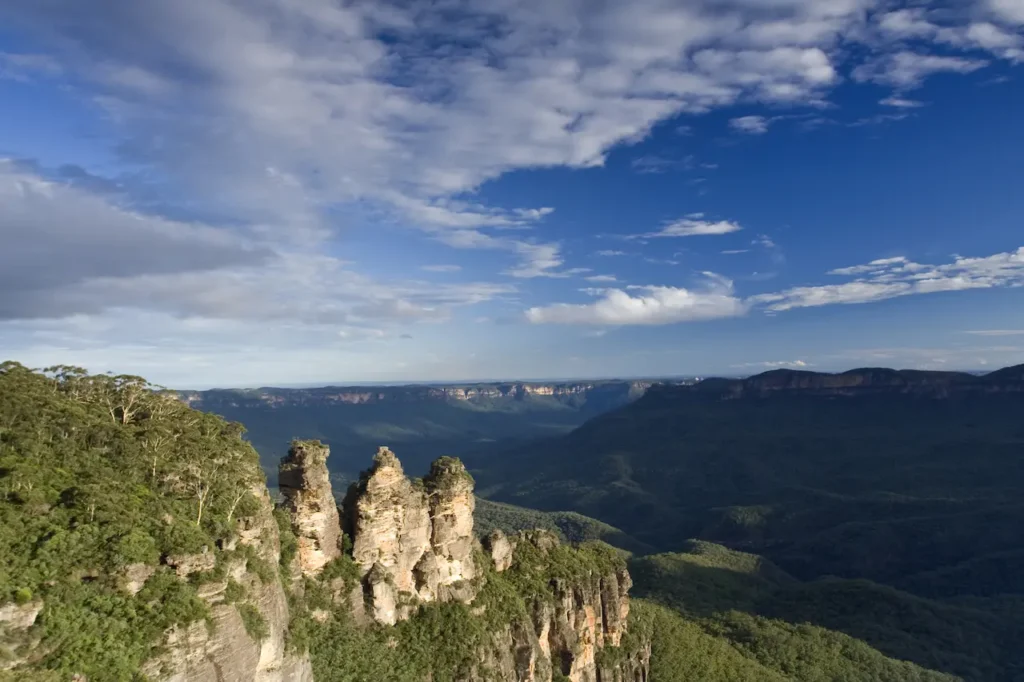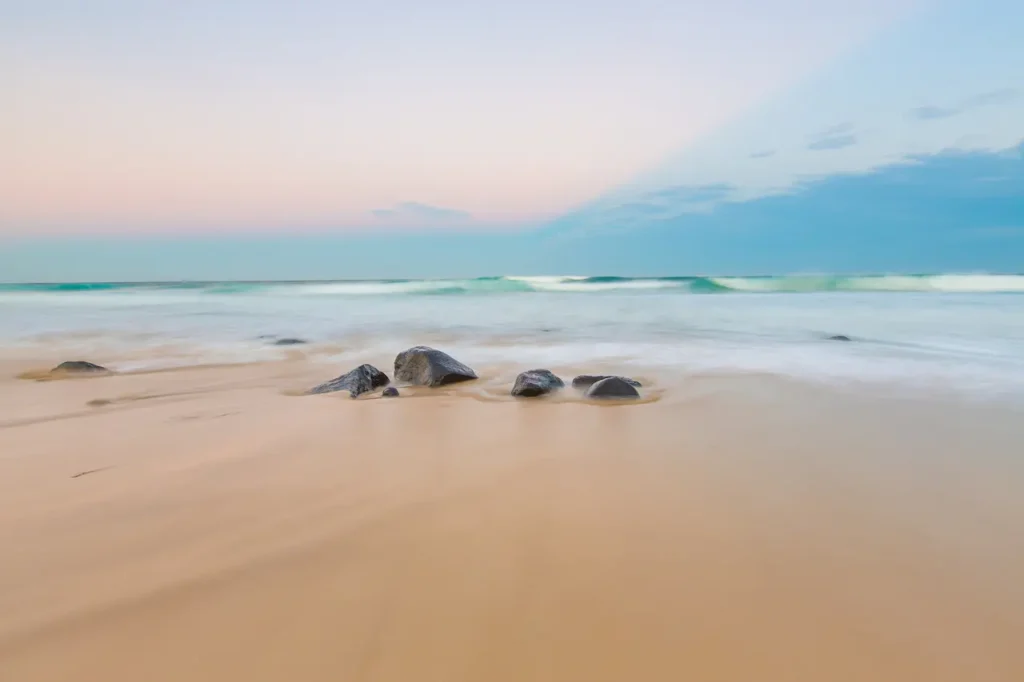Based on Australia’s colonial history, New South Wales is actually the country’s oldest state. Because of its earlier settlement, tourists exploring the state can expect to come across Australia’s oldest vineyards, ports, mountain passes, and other vital pieces of Australian colonial history.
But alongside its European settlement, New South Wales unique natural attractions also speak to the region’s rich indigenous history, from the banks of the Murray River to the misty peaks of the Blue Mountains.
If you’re looking to engage with NSW’s immense and diverse history, then you’ll absolutely need to explore the destinations and attractions we’ll be outlining below. Here’s our definitive guide on what Australian history buffs should see and do when exploring New South Wales.
Table of Contents
ToggleThe Murray-Darling Basin: NSW’s Natural State Border
A trip around the state should ideally always begin with an exploration of the Murray-Darling Basin. As the Murray River acts as a natural state line between NSW and Victoria, there’s naturally plenty to see and do on either side, so to really experience this region, we have to recommend staying on both the NSW and Victorian side.
Cobram, VIC
A quiet town that borders the Murray Valley Regional Park and the Barooga Campgrounds, Combram is home to many historical attractions that link NSW and Victorian colonial history.
Whilst you can find riverside campsites all along the length of the Murray River, we have to recommend securing accommodation in Cobram for families who’d prefer to explore the township itself. While you’re here, you definitely need to check out The Log Cabin, a well-preserved colonial homestead in Cobram, Old St. Joseph’s Hall for lovers of church architecture, and the Cobram-Barooga Bridge, also known as the Cobram Old Bridge. Officially opened in 1902, this heritage bridge is still functional today, connecting Cobram, VIC to Barooga, NSW.
Corowa & Howlong, NSW
On the NSW side of the Murray, you can expect to enjoy even more camping and gentle river explorations – with the added bonus of lengthy and highly detailed historic walking trails. Covering over a combined 50 different historic sites, the Corowa and Howlong walking trails transport you from the birthplace of Australia’s Federation and the making of a nation, showcasing the region’s oldest buildings and most significant colonial-era stories.
Both the Corowa and Howlong historic trails take at least 3 hours to complete by foot and just 1 hour by car, so be sure to carve out at least 1-2 days in the region if you’re looking to enjoy both of these journeys through NSW history.

Blue Mountains National Park: the Gateway to Country NSW
Encompassing New South Wales’ own Hanging Rock, the Three Sisters, the Jenolan Caves, the Red Hands Cave and its indigenous cave paintings, Victoria Falls, and a range of other fantastic natural and archaeological attractions, the Blue Mountains region of NSW provides a glimpse back in time, showing the full wilderness of Australia’s alpine regions and preserving these landscapes that have remained largely untouched for thousands of years.
On top of climbing a range of rugged mountain peaks and bearing witness to the immense eucalypt forests, visitors to this region can also enjoy the unique experience of walking across the mountain passes that allowed early Sydney Cove settlers to access the sheltered, arable land that existed on the other side of the Great Dividing Range.
This in a nutshell is the historic significance of the Blue Mountains region. The mountain range was originally considered to be impassable by European settlers, until Blaxland, Wentworth and Lawson’s 1813 expedition culminated in the establishment of the site that would eventually become the Victoria Pass, a mountain pass that visitors can still explore today.
If you do visit Mount Victoria to see the Pass in all its glory, then be sure to check out the view of the region from Mitchells Ridge Lookout. This vantage point provides panoramic views of the Blue Mountains region and a unique sight of the sandstone ramparts of Victoria Pass itself.

Hunter Valley: Home to Australia’s Oldest Wine Country
Alongside allowing you to tread the same ground as European settlers, the Blue Mountains region and its surrounding plains and valleys were also home to six main groups of Indigenous peoples, these being the Darug, Gundungurra, Wiradjuri, Wanaruah, Darkinjung and Tharawal cultures. Through the cultural sites and preserved ecological teachings of these indigenous populations, NSW historians and ecologists have been able to learn about the earliest conservation practices that helped shape country NSW into what it is today.
The Maitland area and the Hunter Valley region in particular has a similarly extensive ecological history, but the land practices recorded by the Wonnarua people of the Hunter Valley region are very different to records from the Blue Mountains. This is namely because the sloping hills and winding rivers of the Hunter Valley region had different dreamtime origins to the towering mountain ranges. The more temperate climate of the Hunter Valley region also provided different food sources for indigenous populations prior to colonial settlements.
Today, the dynamic biomes and landscapes that comprise the Hunter Valley remain largely unchanged, except for the fact that the region has been transformed into an agricultural and viticultural hub. In fact, the Hunter Valley region is renowned for being Australia’s oldest wine country, with the Wyndham Estate being recognised as Australia’s oldest vineyard.
If you want to learn more about the foodie experiences you can enjoy in the Hunter Valley region, you’ll find plenty of sights to see and things to do across our website. But for those who want to engage with the region’s indigenous history as well, we highly recommend visiting the Wollombi Aboriginal Cultural Experience site in Laguna. Located upon a traditional meeting place for local indigenous peoples, this site is considered a central hub for the Wonnarua people and their neighbouring groups. A day here is sure to enrich and enlighten both international and domestic travellers alike.
Exploring NSW’s Past, Present, & Future
Alongside these country sites, an exploration of historical NSW naturally wouldn’t be complete without at least one trip to Botany Bay and the point where Cook’s First Fleet first made contact with the Australian mainland, and of course, Sydney Cove itself, which we now know as Circular Quay.
Thankfully, they say that all great NSW road trips end up on the east coast, so be sure to set your sights on the rising sun when travelling across this great state and taking in all its many stories and histories. In retracing the steps of our forefathers and immersing yourself in tales of the dreamtime, you should be able to find your way back to Sydney, Newcastle, and other metropolises that make up the bustling present and vibrant future of New South Wales.